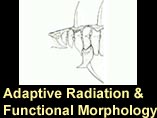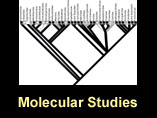|
|
|||||
Molecular studies:
Recent molecular studies include collaboration with the Kingsley lab at Stanford. Development of genome-wide SNP arrays have allowed detailed genomic and morphological assessment of three sets of lake-stream species pairs on Haida Gwaii (see Deagle et al. 2012) and a phylogenomic study of morphologically divergent stickleback populations from throughout the Haida Gwaii archipelago (see Deagle et al. 2013).
We are using a 3072 SNP array to examine niche differentiation among genotypes at a lake where previous studies have shown extensive microspatial differentiation between the defense and trophic phenotypes (see Reimchen 1980, 1997, Reimchen and Nosil 2001, 2002).
Full-genome sequences have been completed for 29 populations of Haida Gwaii stickleback that comprise the full range of morphological variability across a broad diversity of habitats, from large oligotrophic mountain lakes to small dystrophic ponds. Differentiation in the stickleback opsins between clear and blackwater habitats has recentlly been completed and shows similar amino acid shifts across unrelated taxa (see Marques et al. 2017).





